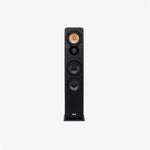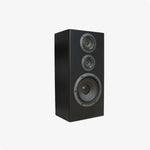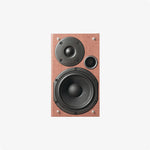Creating a home theater system can transform your living space into an entertainment hub, providing an immersive audio-visual experience. Whether you're a movie buff, a sports fan, or a gaming enthusiast, a well-set-up home theater can enhance your enjoyment. Here’s a step-by-step guide to help you set up your home theater system for optimal performance.
1. Plan Your Space
Before purchasing any equipment, consider the room where you'll set up your home theater. The size, shape, and layout of the room will influence your choices and setup.
Room Size: Larger rooms may benefit from more powerful speakers and larger screens, while smaller rooms may require more compact equipment.
Seating Arrangement: Determine the best seating arrangement for optimal viewing and listening. Ensure there is a clear line of sight to the screen from all seats and consider the distance from the screen for comfortable viewing.
2. Select Your Equipment
Choosing the right equipment is crucial for achieving the best home theater experience. Here are the essential components:
TV or Projector: Decide between a large-screen TV or a projector and screen setup. TVs are easier to set up and use, while projectors can offer a more cinematic experience.
Receiver: The AV receiver is the hub of your home theater system, managing audio and video inputs and outputs. Choose a receiver that supports your desired number of speakers and the latest audio and video formats.
Speakers: A standard 5.1 system includes five speakers (front left, front right, center, surround left, surround right) and one subwoofer. More advanced setups might include additional speakers for a 7.1 or even a Dolby Atmos system.
Media Sources: These can include Blu-ray players, streaming devices, gaming consoles, and cable/satellite boxes. Ensure your receiver has enough inputs to accommodate all your sources.
Cables and Accessories: High-quality HDMI cables, speaker wires, and other accessories are necessary for connecting all your components.
3. Position Your Speakers
Proper speaker placement is essential for achieving surround sound. Here’s a guide for positioning a standard 5.1 speaker system:
Front Left and Right Speakers: Place these on either side of the TV or screen at ear level when seated, angled slightly toward the seating area.
Center Speaker: Position directly above or below the TV, centered, and at ear level. This speaker handles most dialogue.
Surround Left and Right Speakers: Place these slightly behind and to the sides of the seating area, at ear level or slightly higher.
Subwoofer: Position the subwoofer near a wall or in a corner for the best bass response. Experiment with placement to find the best sound.
4. Connect Your Equipment
Connecting all your components correctly is key to ensuring they work together seamlessly.
HDMI Connections: Use HDMI cables to connect your media sources to the AV receiver and the receiver to the TV or projector.
Speaker Connections: Connect the speakers to the receiver using the appropriate speaker wires. Ensure the positive and negative terminals match up correctly.
Power Connections: Plug all components into a surge protector to protect them from power surges.
5. Calibrate Your System
Calibrating your home theater system ensures you get the best audio and video quality.
Audio Calibration: Many AV receivers come with a calibration microphone and software. Follow the instructions to calibrate your speakers automatically. Manually adjust the settings if necessary to balance sound levels and improve audio quality.
Video Calibration: Adjust the TV or projector settings for the best picture quality. Most devices have preset modes (e.g., Movie, Sports, Game) that you can tweak. Use calibration tools or professional services for precise adjustments.
6. Optimize Your Room
Optimizing the room environment can significantly enhance your home theater experience.
Lighting: Install dimmable lights or blackout curtains to control lighting and reduce glare on the screen.
Acoustics: Use rugs, curtains, and acoustic panels to minimize sound reflections and improve sound quality. Avoid hard surfaces that can cause echoes.
Comfort: Invest in comfortable seating with a clear view of the screen and easy access to controls.
7. Test and Enjoy
Once everything is set up, test your home theater system by playing a variety of content. Adjust settings as needed to achieve the best experience.
Test Audio: Play a surround sound test video to ensure all speakers are working correctly and adjust levels if necessary.
Test Video: Play high-definition or 4K content to check the picture quality and make final adjustments.
Conclusion
Setting up a home theater system involves careful planning, selecting the right equipment, and optimizing the setup for the best audio-visual experience. By following this guide, you can create a home theater that brings movies, sports, and games to life, providing endless hours of entertainment for you and your family. Enjoy your new home theater!



















Laisser un commentaire